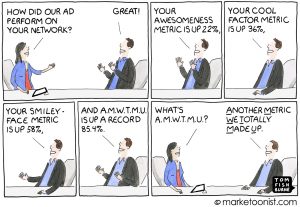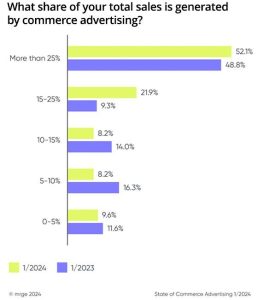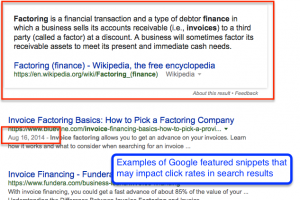
Digital advertising has been blacklisted.
Everyone is so fixated on content marketing, and organic search that even uttering the words ‘let’s pay for some traffic’ have become awkwardly pushed to the side.
But don’t be fooled.
Even the most successful ‘content marketers’ are still using digital advertising tactics to get their content found. They might just not tell you about it – because it contradicts their methodology.
We can’t forget how effective ads can be for getting our products and services found – but we need to be aware of how the landscape is changing.
The state of digital advertising
Digital ad revenue continues to grow year on year.
The big trend you need to know about?
Mobile is taking over.
(Not quite taking over, but it’s growing rapidly)

Ok you get it; content marketing alone might not be enough and mobile is becoming more and more important if you want to advertise online.
But where do you start? How do you know what is the best platform for your business?
The most effective form of digital advertising is contextual – it depends on who you are trying to reach and how you want to get there.
Let’s run through the options, then give a quick breakdown of who benefits most from each.
Social Media
It’s a rare thing to find a company without a social media division these days, even if that “division” is just some hapless intern working for experience.
From restaurants to airlines to celebrities – if there’s a brand, there’s a Twitter handle to match.
When it comes to advertising on social media, everything is pretty new. The way we advertise on these platforms is continually changing, because no one really knows what works.
Advertisers aren’t quite sure yet (although some will claim they are). The consumers are confused with these new ads popping up on their social streams. And the platforms themselves (Facebook, LinkedIn and Twitter) are still balancing user experience with maximising revenue.
Social ads generally follow Pay-Per-Click or Pay-Per-Impression models, making them relatively easy to budget for – because you pay for what you get.
Now for a closer look at Facebook and Twitter as advertising platforms.

This social network is perhaps the most progressed with its digital advertising platform.
Facebook ads are similar to Google PPC campaigns, where you can bid for clicks or impressions on different keywords, then display ads on Facebook’s right vertical bar.
More recently Facebook introduced news feed ad spots if you have an active Facebook page. These are proving a much better ROI than the right side bar.
Keep in mind that the people seeing your ads will find them in a social context – so photos and images are a core component of a successful ad campaign.
Who should advertise on Facebook?
Devoted PPC marketers with the willingness to spend a lot of time getting things right.
Keep in mind that the sheer number of users Facebook has, makes it a perfect fit for B2C marketers. But B2B marketers have started to make their presence known because of the extremely targeted information the platform is accruing on all of us.
Facebook ads are easy to launch, and just as easy to edit (especially with the new mobile ad manager).
Marketers are able to make spot fixes on the fly to optimize and correct underperforming ads while boosting budget for winners.

These ads are, again, not dissimilar from Facebook advertising when it comes down to brute mechanics.
But they’re a different animal conceptually. Facebook ads are, well, advertising. They’re your chance to put your commercial foot forward.
Twitter ads are not. Paying for prominence here is a way to put what you might normally tweet into a more obvious place.
Ads work in parallel with the personality of your normal, free Twitter feed, and shouldn’t veer off into sales territory.
Who should advertise on Twitter?
Marketers with a solid Twitter strategy, but not enough Twitter traction.
Promoting your posts to the right audience (and yes, Twitter’s ad engine allows considerable targeting) is your way of cutting through the logjam of influencers and expose potential clients to your social voice.
Interstitial

The relative new kid on the block.
Interstitial ads, if you haven’t heard the phrase before, are promotional pages that show up before a visitor makes their way to the content they actually want to see.
On one hand, that basically guarantees visibility. On the other, it’s irritating; interstitial ads are prime targets for adblock software, and many clients avoid them on principle.
As a result, the industry has undergone a mild reformation. They’ve really come into their own on mobile platforms, where they quickly capture attention, leading to soaring success, especially in the case of attention-grabbing video and rich media ads.
Who should advertise with interstitial?
Companies with the budget to make a move on mobile and do it right.
Poorly made mobile ads are just as annoying as their increasingly disliked predecessors; treat them as an opportunity to create original content, then show it to your viewers.
Banner Ads

Maligned, dispensed with, but still darn useful.
Banner ads have caught a load of flak for the slashed CTR’s they’ve seen of late. But while the numbers are daunting, they merely point to a poor average, not a death knell for the humble banner.
They might not pull the engagement that more obtrusive options do, but banner ads remain wonderful for establishing visual branding, and hitting a highly targeted audience.
The ability to pick and choose where an ad shows up allows advertisers to carefully tailor their campaign toward a given site and demographic.
But in order to beat flagging CTR’s, companies do have to evolve. Think about clever examples like Skittles’ interactive, offbeat banners, or powerful, fold-dominating movie posters.
Who should advertise with banner ads?
Established companies with a solid ad budget, and an extremely clear idea of who they want to reach and how.
A defined audience and a superb visual idea can still combine to keep banners relevant.
PPC
The skimpier, but less-expensive cousins to banner ads.
Google’s Pay-Per-Click campaigns have become a massive boon for cash-strapped businesses looking to muscle in on banner space. And at least at the moment, they’ve proven to be effective.
Those stark text boxes may blend in to the background of many sites, but find a convincing enough message, and it’ll still snag a few eyes.
Perhaps the best thing about PPC ads is that they offer a more-or-less predictable ROI, and one that, even if an ad belly-flops spectacularly, won’t drop to levels low enough to seriously hurt most companies.
Design costs for text ads are nil, and the PPC model guarantees that advertisers won’t drop too much of their budget upon launch.
Who should advertise with PPC?
Companies that don’t translate well to visual media.
Whether you simply don’t have a graphic artist on hand, or your services are hard to sum up in a photo, PPC is your best bet for a high-yield campaign.
The best PPC ads are the ones that ditch details, and go for the jugular with competitive prices and calls to action.
Wrapping it up
Alright, we’ll try and end this on a slightly less wishy-washy note.
While all ad formats still have their applications for different companies, changing technology and market trends will result in a few finding even greater success down the road.
We’re particularly talking about mobile. Whether you go banner, video interstitial – whatever. Mobile ads will likely make up a larger and larger percentage of all advertising in the coming years. Evolving tech such as proximity marketing will only exaggerate that effect.
But if you’re attached to a particular form, there’s still good news. The lessons learned from more traditional marketing aren’t about to be completely invalidated. At the end of the day the actual quality of ads will be the single largest determining factor of their success.
(231)








